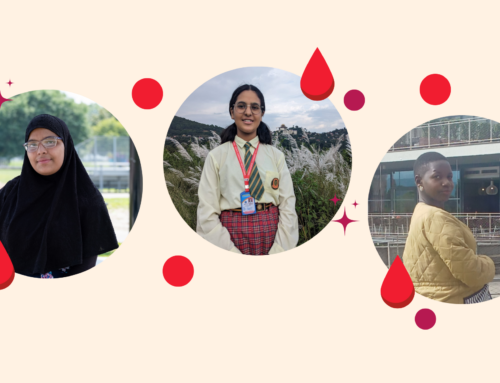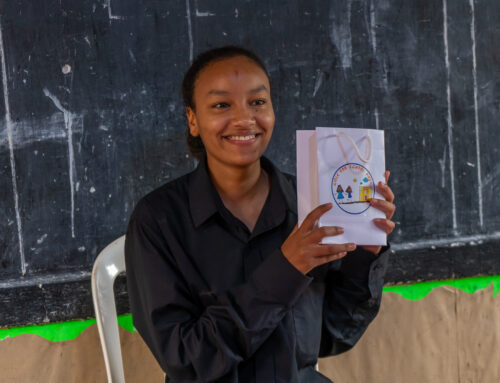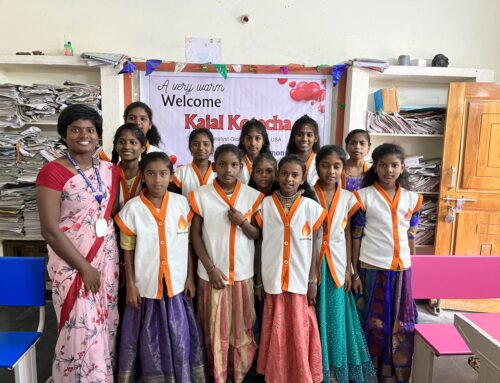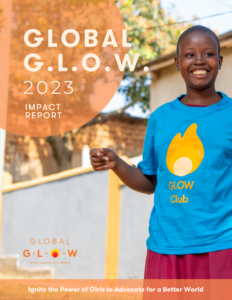Bridging the Digital Divide: Girls’ Lack of Access to Technology in India
Gender norms deeply entrenched in patriarchal societies like India often restrict and affect equitable access to technology for women and girls, particularly those from underprivileged and resource-poor backgrounds. They manifest in girls having low digital literacy rates, lack of familiarity with the digital tools, and unequal access to digital or electronic devices. ‘The Mobile Gender Gap Report 2019’ points out that Indian females are 56% less likely to use mobile internet than males, with only 35% of active users in the country being females. Technology is highly gender-cognizant and a growing digital divide is something that India has been grappling with for a long time. For young and adolescent girls, restrictions imposed in the private and public space get extended to the digital space as well.
“Indian females are 56% less likely to use mobile internet than males, with only 35% of active users in the country being females.”
Only 29% of India’s internet users are females. Unless this digital gender divide is bridged, India’s aggressive push towards digitization will further entrench the political, economic, and social marginalization of females. The bulk of policy and commercial interventions focus on improving access to internet services by upgrading spectrum and broadband infrastructure and bringing down the costs to individual users, in addition to facilitating the uptake of digital technologies through programs for digital literacy. Isolated technical solutions, however, will be inadequate to address the social and cultural roots of India’s digital gender divide.
Take mobile phone connections for example. While 43% of Indian men own a cell phone, women lag behind with only 28% mobile ownership. The gender gap in mobile ownership – estimated at about 114 million – reinforces the fact of unequal access, but also paints an incomplete and misleading picture. Unable to read or write, young girls and women can barely dial a number or read messages; most do not know their mobile numbers and have to ask or reconfirm with their male household heads (fathers and brothers). Their cell phone usage is mostly limited to pressing the green button when the phone rings. The digital divide is thus not simply a question of access to digital technologies but also about the capacity to make meaningful use of the access to technology.
Patriarchal attitudes and beliefs also restrict women’s rights to public spaces, preventing them from accessing community internet centers, outside employment, and co-ed training facilities. In many parts of India, not only do social systems deeply rooted in gender inequality seem impervious to change, they seem to be becoming more deeply entrenched.
Since 2010, there have been numerous reports of khap panchayats and other conservative groupings banning or severely restricting mobile phone use for women; most recently, a panchayat in a village in Mathura announced that girls using mobile phones outside their homes would be fined Rs 2,100. A study by the Internet Democracy Project argues that in India, mobile phones make it possible to develop new ideas of the self, to explore and exercise autonomy, choice, and agency. According to the study, “by creating all these new possibilities, and especially by creating spaces for privacy that were previously not available to young women in these communities, mobiles have disrupted the existing patriarchal regimes of control and surveillance.” It is precisely this possibility of choice and autonomy that the khap panchayats want to prevent, the study argues. Whether the bans have worked or not is in some sense beside the point; rather, what is critical is that without changes in deeply entrenched social and cultural values, digital technologies can act as tools of control and surveillance, not empowerment.
Girls’ limited access to technology exacerbates the pre-existing socio-cultural norms which further trickles/percolates at policy level and state decision-making bodies. This might translate years later to a generation of women who are less educated, married, and pregnant at younger ages, less likely to have financial independence, and as a result, have less agency in their post-marital households. This then has intergenerational effects on their children, and especially their girl children.
The gender digital divide has overwhelmingly impacted women’s health, particularly in the most recent COVID-19 vaccination drives in India, where it was witnessed that young girls and women were falling off the COVID-19 vaccination plan due to language barrier and lack of holistic approach towards access to technology for women and empowering them to be able to use technology; since the entire process of registration to vaccination certificate receipt was online with minimal holistic digital literacy. Restricted access to technology further disadvantages young girls and women to have access to unique online information such as employment and social security opportunities, reproductive health advice, financial knowledge, and management (even more important in a COVID-era).
In the context of young girls in India having limited access to technology, quality education is a worrying theme (especially in this COVID-19 era) that needs to be prioritized for immediate action. UNESCO estimates suggest that out of the total population of students enrolled in schools/colleges globally, 89% are currently out of school because of school closures. Of the 1.54 billion children and youth, 743 million are girl students. Even before COVID-19, India had 30 million out-of-school children, of which 40% were adolescent girls. The pandemic is expected to accentuate the existing gap in education, especially for young and adolescent girls.
“In the context of young girls in India having limited access to technology, quality education is a worrying theme that needs to be prioritized for immediate action.”
Major deterrents for girls to access digital technology are:
Social norms: Social norms control women’s autonomy and aspirations, impacting their access to technology and digital tools. This begins from a very early age when adolescent girls are controlled in terms of their mobility, access to leisure, use of technology, etc. In Uttar Pradesh, for instance, 70% of young boys access the internet regularly as compared to 33% of girls in the age group of 15-19 years (Population Council of India 2019).
Language barrier: Most digital interface is in English, which discourages users. Many girls do not study in English-medium schools as they are more expensive. Parents and community members see education as a productive stopgap activity for girls to engage in until the time they are ‘safely married’
‘Patriarchy of pockets’: Patriarchy decides that it is the men of the household who will own digital devices and those will not be a shared family asset or commodity. More than 60% of adolescent girls reported that male members of the family have better and easier access to digital devices (Bridging the Digital Divide 2021).
Online violence and abuse: Violence and abuse faced online act as a major deterrent for girls to access digital platforms and applications. Parents often use this as a pretext to control adolescent girls, citing internet as an unhealthy distraction.
Ensuring Digital Inclusion for young girls and women in India
While the economic and health impacts of the COVID-19 pandemic are going to be long-term, the social impacts need to be addressed immediately. Loss of livelihood and financial distress at the family level, indefinite school closures, social isolation, and distancing practices, lack of social support, etc., are going to disproportionately affect the young and older adolescent girls. We need to look at how to address these gaps and challenges, at both systemic and policy levels.
Some practical and cost-effective solutions are:
- Citizen and community engagement that employ citizen- or youth-led campaigns to address and recognize the patriarchal social norms and contribute to creating an enabling environment for girls.
- Community-owned and operated resource centers across the country, having computers and printers that would enable continuity of education, especially for girls from poor and underprivileged families.
- Restrictions and rigidity imposed on adolescent girls by parents and family contribute to their low usage and access to technology. Engagement and conversation spaces with parents and discussion on education for girls as avenues of self-reliance will be helpful in bringing attitudinal shifts.
- Knowledge- and information-sharing in the local language on the use of technology and use of e-gadgets for educational purposes by community groups, citizens groups will break the myths and taboos.
- Strengthening local infrastructure to provide free/subsidized/cheap Wi-Fi access during specific times of the day to facilitate online education for students.
- The school ecosystem is an important focus for encouraging learning and motivating students, influencing parents and community, and in turn, addressing existing gender biases. School infrastructure should be ramped up, and cater to the provisions of e-learning with proper resources, curriculum in local languages that would encourage learning and aspirations.
As we continue to fight the COVID-19 pandemic, we cannot afford to ignore the need for creating a robust digital infrastructure for young and adolescent girls. Bridging the digital divide will be critical in ensuring that the progress we have collectively made in this space is not lost.
Written by Pallavi Gahlaut, Global G.L.O.W. partnership coordinator from SES India. Asia Initiatives also works in partnership with Global G.L.O.W. and SES India.












